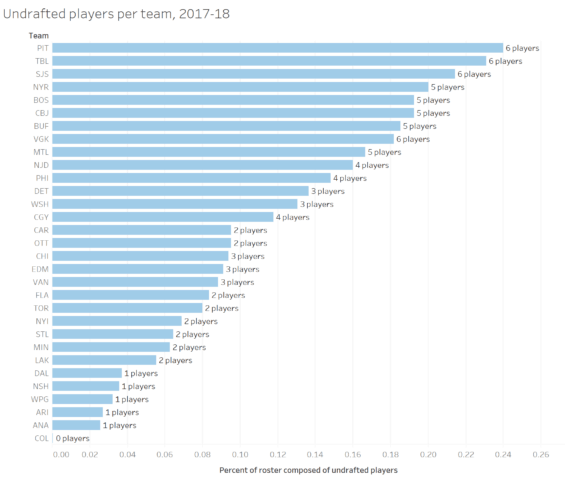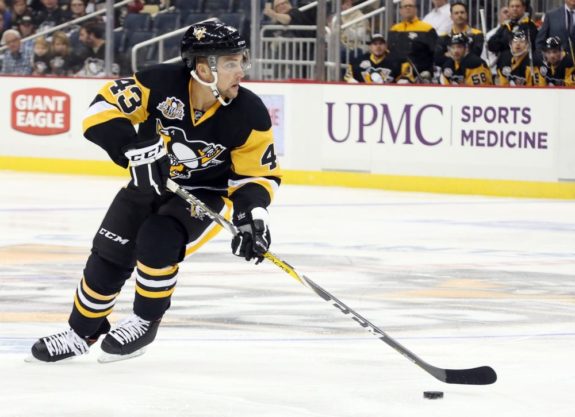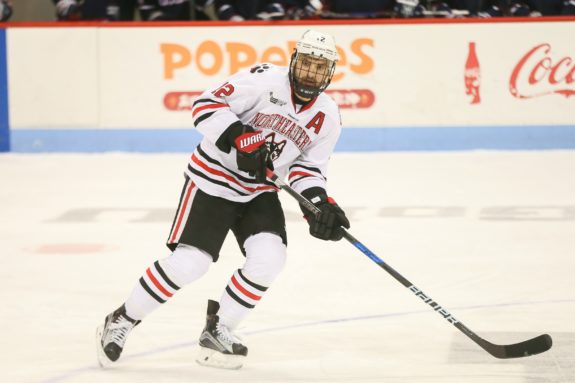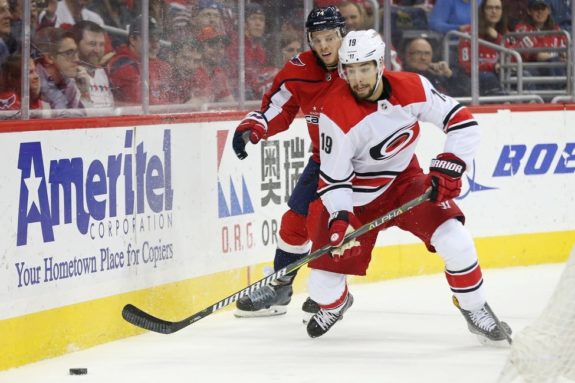The Pittsburgh Penguins picking up former Carolina Hurricanes forward Josh Jooris at the 2018 trade deadline wasn’t the huge splash some observers were expecting from them. It did, however, cause the Penguins to lead the league in a curious stat. With the addition of Jooris, the Penguins now have gotten the most use out of players from college leagues who got passed over by the NHL draft.
Team Undrafted Ratios
By seeing what percentage of the players that teams have iced for at least one game this season didn’t come from draft picks, we can see that the Penguins have been icing an unusually heavy proportion of undrafted players. Just about a quarter of the team the Penguins have iced this 2017-18 season came to the NHL through alternate routes.

All teams except for the Colorado Avalanche have iced at least one undrafted player this season, but only three have played at least six. The Penguins have a backup goaltender, four forwards and one defenseman acquired as free agent signings. Two were passed over in the NHL draft and four were selected because of their play on college teams. And all of them are coming to have a genuine impact on this iteration of the Penguins.
Related: Best Undrafted Players in NHL History
Undrafted Players With the Penguins
The Penguins’ undrafted contingent is comprised of Conor Sheary, Zach Aston-Reese, Carter Rowney, Chad Ruhwedel, Casey DeSmith and now Josh Jooris.
Although injuries have cut Ruhwedel, Rowney, and Aston-Reese’s seasons short, the three players all had solidified spots in the lineup for consistent stretches of time. Sheary has played all but three of the Penguins’ 72 games this season. And with Jarry’s trip back to the AHL Monday due to the impending return of starting goaltender Matt Murray, who has been out of the lineup with a concussion, DeSmith will settle into the role of official backup goaltender. Jooris will now get the chance, with his call back into the lineup due to a Rowney injury, to see if he can also find a more permanent spot in the Penguins lineup.

There are a few advantages to fitting undrafted players into the lineup. One is that because many of these players are still fighting to establish themselves in the NHL, they’re on very team-friendly contacts. Every undrafted player on the Penguins, with the exception of veteran Sheary, is costing the team less than $1 million per season, making them cheap fill-in options for injuries on the roster.
Another advantage is that this method allows teams to get a look at players who might be developing later in their careers. In 2017, at the end of Aston-Reese’s last season at Northeastern and prior to his signing with the Penguins, Red Line scout Kirk Luedeke told Sports Illustrated that teams were disappointed they hadn’t drafted him when they’d had the chance.
“He always had the hockey sense, he just didn’t necessarily have the production,” said Luedeke. “I think teams are looking back and kicking themselves that they didn’t draft him because he’s one of those players that’s continued to develop ever since he left the USHL and went to college.”

Scouting undrafted players gives teams a chance to catch players like Aston-Reese, who start finding their game after juniors. 23-year-old Aston-Reese, who put up six points in 10 games with the Penguins, is the perfect example of a player whose college team gave him years of experience but that the team was able to sign on a low-cost deal.
Related: 2017 Draft Recap: Top 5 Undrafted Players
Impact on the Penguins
Unlike Sheary and Rowney, Jooris wasn’t originally passed over in the NHL draft. Rather, like Aston-Reese, he was originally recruited because of his performance in college hockey. In 2013, the Calgary Flames signed him as a free agent after three seasons in the NCAA.

The fact that this year’s Penguins have been so significantly composed of players acquired without the NHL draft is a testament to the Penguins’ scouting process, as well as a sign that the makeup of the NHL is changing every year. Soon, maybe it won’t be rare for a quarter of an NHL team to have come to the majors through college leagues, or despite missing out on the draft. After all, don’t forget that Patric Hornqvist—now part of the core of the Penguins, who just signed an extension that locked him in with the team even past the expiration of Evgeni Malkin’s deal—was very nearly passed over in the 2005 NHL draft.
He was selected with the very last pick that day by the Nashville Predators. Twelve years later, he would knock a Stanley Cup-winning goal into the back of the net.